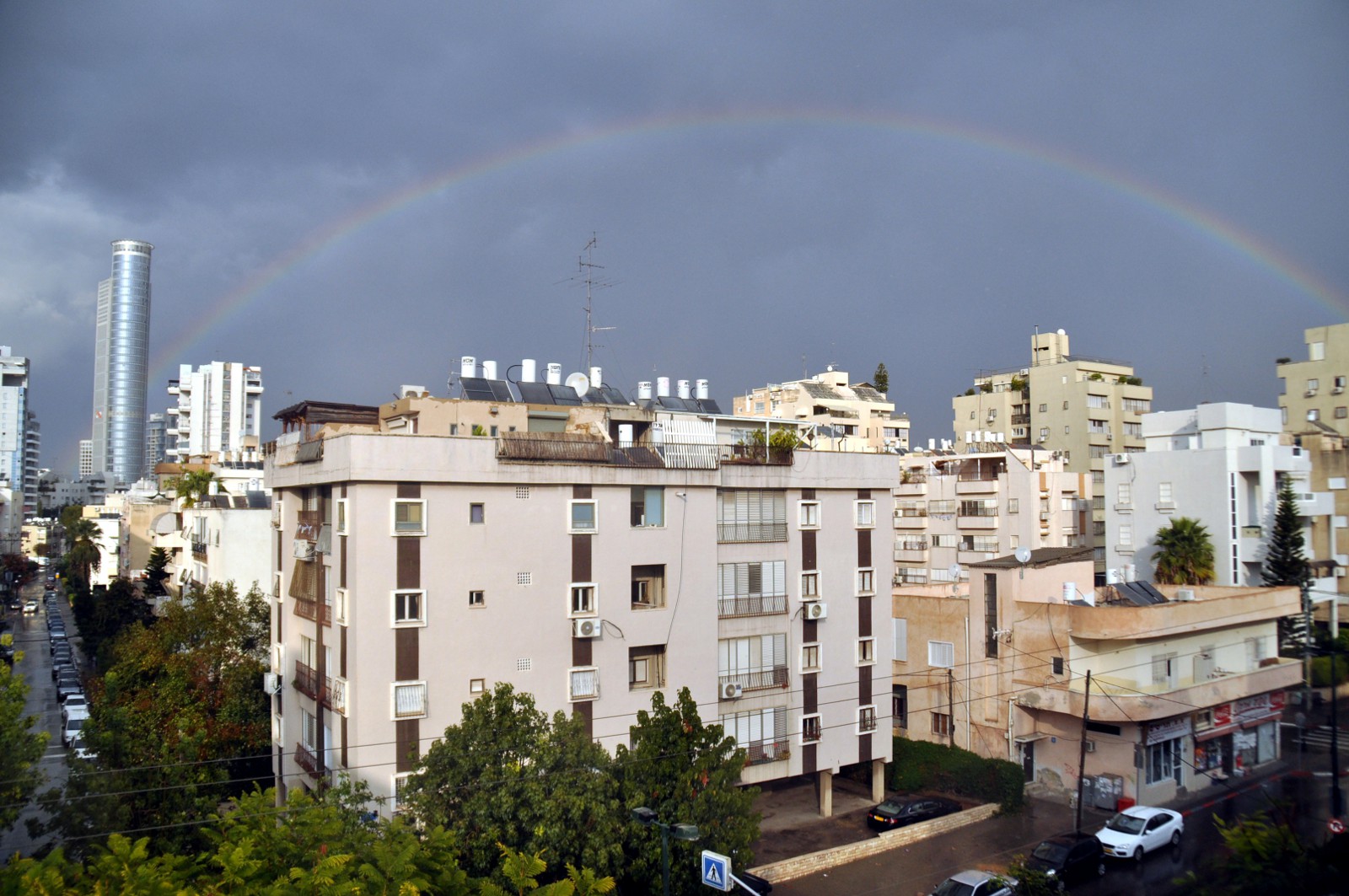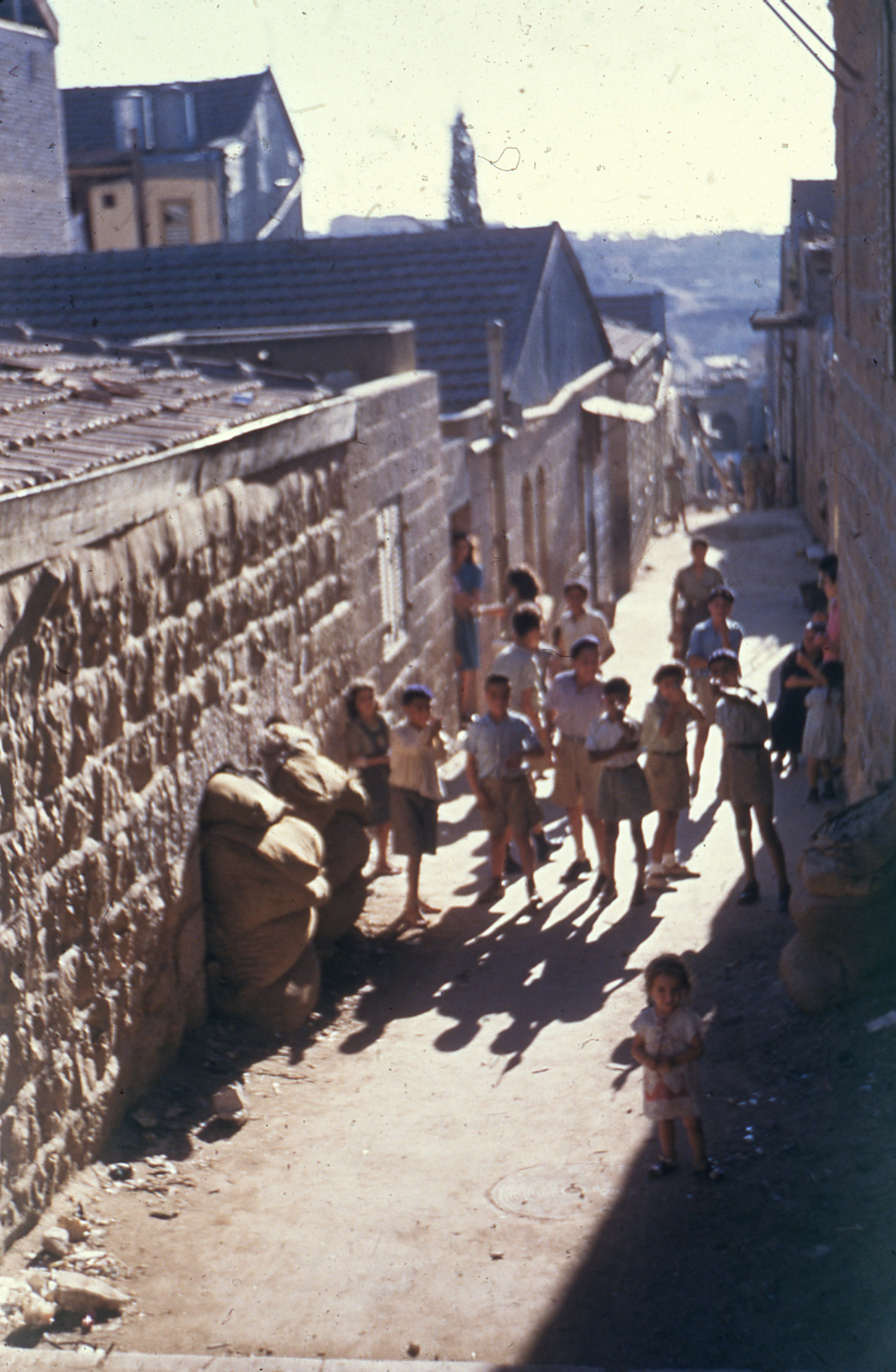|
Nahala (other)
Nahala ( he, נחלה) means either "heritage" / "inheritance", or "homestead" / "estate". Also spelled nachala and nahalah. When followed by a connected term, the suffix -t is added, thus becoming nahalat (as a feminine noun in the construct form), with the common variant spellings nachlat and nahlat. It may refer to: Places in Israel * Nahala, Israel, a moshav in south-central Israel * Nahalat Binyamin, a street and neighbourhood in Tel Aviv, Israel * Nahalat Reuben, the old name of Ness Ziona * Nahalat Shimon, a neighborhood in Jerusalem * Nahalat Shiv'a, a neighborhood in Jerusalem * Nahalat Yitzhak, a neighborhood of Tel Aviv * Nahalat Yitzhak Cemetery, Givatayim, east of Nahalat Yitzhak neighborhood * Nachlaot, a grouping of 23 courtyard neighborhoods in central Jerusalem Other uses * ''nahala'' or ''yahrtzeit'', a Jewish annual memorial observance of somebody's day of death See also * Nahla (other), Arabic common noun and derived name and toponym * Nahalal ... [...More Info...] [...Related Items...] OR: [Wikipedia] [Google] [Baidu] |
Construct Form
In Afro-Asiatic languages, the first noun in a genitive phrase of a possessed noun followed by a possessor noun often takes on a special morphological form, which is termed the construct state (Latin ''status constructus''). For example, in Arabic and Hebrew, the word for "queen" standing alone is ''malika'' and ''malka'' respectively, but when the word is possessed, as in the phrase "Queen of Sheba" (literally "Sheba's Queen"), it becomes ''malikat sabaʾ'' and ''malkat šəva'' respectively, in which ''malikat'' and ''malkat'' are the construct state (possessed) form and ''malika'' and ''malka'' are the absolute (unpossessed) form. In Geʽez, the word for "queen" is ንግሥት nəgə''ś''t, but in the construct state it is ንግሥተ, as in the phrase " heQueen of Sheba" ንግሥተ ሣባ nəgə''śta śābā.'' . The phenomenon is particularly common in Semitic languages (such as Arabic, Hebrew, and Syriac), in Berber languages, and in the extinct Egyptian language. ... [...More Info...] [...Related Items...] OR: [Wikipedia] [Google] [Baidu] |
Nahala, Israel
Nahala ( he, נַחֲלָה, ''lit.'' Estate) is a moshav in south-central Israel. Located a few kilometers north of Kiryat Gat and south of Kiryat Malakhi., it falls under the jurisdiction of Yoav Regional Council. In it had a population of . History The community was founded in 1953 by Yemeni Jewish refugees on land that had belonged to the depopulated Palestinian village of Summil. The founders had originally established moshav Agur in 1950.Agur Homee Along with the neighboring Menuha, it was named for the Menuha VeNahala ( he, מנוחה ונחלה) organization that founded Rehovot
Rehovot ( he, רְחוֹבוֹת ''Rə ...
[...More Info...] [...Related Items...] OR: [Wikipedia] [Google] [Baidu] |
Nahalat Binyamin
Nahalat Binyamin ( he, נחלת בנימין, also spelled Nachalat, Nachlat, and Nahlat Binyamin) is a partially List of car-free places, car-free street and a neighbourhood in Tel Aviv, Israel. Name Nahalat Binyamin is translated as "the estate of Benjamin". ''Nahala (other), Nahala'' (with different ways of transliterating/spelling it), is a Hebrew word for either heritage or estate. The second part of the name, Binyamin (the original Hebrew form of the English name Benjamin) has two possible origins: officially it refers to the Hebrew name#Jewish usage, Hebrew name of Theodor Herzl, the founder of Types of Zionism#Political Zionism, modern political Zionism. However, local lore has it that the founders of Nahalat Binyamin asked for money from both the Jewish National Fund (JNF) organisation, closely linked to Herzl's activity, and from Baron Edmond de Rothschild, whose Hebrew name was also Benjamin, a man famous for being a major benefactor of Jewish settlement in Ot ... [...More Info...] [...Related Items...] OR: [Wikipedia] [Google] [Baidu] |
Ness Ziona
Ness Ziona ( he, נֵס צִיּוֹנָה, ''Nes Tziyona'') is a town in central Israel. In it had a population of , and its jurisdiction was 15,579 dunams (). History Early history Lying within Ness Ziona's city bounds is the ruin of an Arab village, formerly known as ''Ṣarfān'' (צרפאן), but called in Hebrew ''Ginnot Tzarifin'' (), not to be confused with the IDF base Tzrifin ( he, צְרִיפִין). A story is related in the Babylonian Talmud about ''Ginnot Tzarifin'', that during the time of the Second Temple it was customary to enquire where the first of the barley harvest and wheat harvest ( ''Omer'') were reaped when they were brought to the Temple, as it was not permissible to bring them from outside the land of Israel. Once, when the ''Omer'' was brought to Jerusalem, they knew not whence it had come. They enquired of a deaf-mute who knew where it had come from and who, mimicking with his hands, pointed to makeshift booths (Heb. "tzarifin"), and pointed to roof ... [...More Info...] [...Related Items...] OR: [Wikipedia] [Google] [Baidu] |
Nahalat Shimon
Nahalat Shimon ( he, נחלת שמעון. ''lit.'' Simeon's Estate) was a Jewish religious neighborhood of about 40 Jewish families in East Jerusalem in the area currently known as Sheikh Jarrah.. It was founded in 1891 by Sephardic and Ashkenazi Jewish Kollels, to house poor Yemenite and Sephardi Jews. The cornerstone of the neighborhood was laid in 1890, near the Tomb of Simeon the Just. History Nahalat Shimon was located at the tip of the Kidron Valley, west of the tomb of Simeon the Just. The namesake Jewish settler organization contends that the land was purchased in 1890 and the first homes were built soon after, housing 20 impoverished families, and that by 1947 there were 100 Jewish homes in the neighborhood. In March 1948, due to mounting Arab violence during the 1948 Arab–Israeli War, the British ordered the residents to evacuate within two hours. According to one of the evacuees, Justice Emeritus Michael Ben-Yair, all these Jewish evacuees from Sheikh Jarrah wer ... [...More Info...] [...Related Items...] OR: [Wikipedia] [Google] [Baidu] |
Nahalat Shiv'a
Nahalat Shiv'a ( he, נחלת שבעה) is a former courtyard neighborhood in Jerusalem. It was the third Jewish neighborhood built outside the walls of the Old City of Jerusalem in the 1860s. Today it is a crowded pedestrian promenade lined with sidewalk cafes. It is adjacent to the Downtown Triangle of central Jerusalem. Name ''Nahala'' is the Hebrew word for heritage or estate. Nahalat Shiv'a means "Estate f theSeven", referring to the seven founding families. History Nahalat Shiv'a was the third residential neighborhood built outside the city walls. There are two stories regarding the purchase of the land. Yosef Rivlin claimed he raised the money on a trip to Russia in 1859, while Yoel Moshe Salomon claimed it was his idea. Lots were cast and Rivlin won the right to build the first house in the neighborhood. The other five founders were Yehoshua Yellin, Michael Hacohen, Binyamin Salant, Haim Halevi and Aryeh Leib Horowitz. Upon his engagement in 1856, Rivlin announce ... [...More Info...] [...Related Items...] OR: [Wikipedia] [Google] [Baidu] |
Nahalat Yitzhak
Nahalat Yitzhak is a neighborhood of Tel Aviv, Israel. Name Nahalat Yitzhak literally means "Yitzhak's Estate" in Hebrew. The neighborhood is named after Rabbi Yitzchak Elchanan Spektor, Chief Rabbi of Kovno, who wrote a book called Nachal Yitzchok (River of Yitzchok). History Nahalat Yitzhak was founded in 1925, east of the Ayalon River, by a group of Jews who came from Kaunas (Kovno), Lithuania. In 1931 the neighborhood had 36 houses and a population of 134 people. It was established on the border of the German Colony Sarona, adjacent to the Borochov neighborhood, the first neighborhood of Giv'atayim. At the beginning it was a farming neighborhood of homesteads. Later a number of industrial plants were built on the neighborhood's outskirts, among them "Tara Dairies", "Yitzhar" factory (the area where Tel Aviv Towers stand), and a number of flour mills. Nahalat Yitzhak became part of Tel Aviv on 10 January 1946.https://www.nli.org.il/he/newspapers/ytlv/1946/04/14/01/artic ... [...More Info...] [...Related Items...] OR: [Wikipedia] [Google] [Baidu] |
Nahalat Yitzhak Cemetery
Nahalat Yitzhak Cemetery ( he, בית העלמין נחלת יצחק) is a Jewish municipal burial ground in the Tel Aviv District city of Givatayim, Israel, east of the Nahalat Yitzhak neighborhood of Tel Aviv. Founded in 1932, it includes more than 30,000 graves, including those of Israeli political and cultural figures, and Rebbes of several Hasidic dynasties. The cemetery contains several tracts of military graves and mass graves of unidentified soldiers from the period of the 1948 Arab-Israeli War. It also features memorials to Jewish communities destroyed in the Holocaust. The cemetery is operated by the Chevra Kadisha of Greater Tel Aviv. The National Insurance Institute has declared it a "closed" cemetery, although burials occasionally take place here for people who pre-purchased their plots. History The area for the Nahalat Yitzhak Cemetery was purchased by the Chevra Kadisha of Greater Tel Aviv in response to the population growth in Tel Aviv and the increasingly limite ... [...More Info...] [...Related Items...] OR: [Wikipedia] [Google] [Baidu] |
Nachlaot
Nachlaot ( he, נחלאות, also ''Naḥlaʾoth'') is a cluster of 23 courtyard neighborhoods in central Jerusalem surrounding the Mahane Yehuda Market. It is known for its narrow, winding lanes, old-style housing, hidden courtyards and many small synagogues. Neighborhoods in Nachlaot (plural of ''nachala'', lit. "homestead") include Batei Broide, Batei Goral, Batei Minsk, Batei Munkacs, Batei Rand, Bet Ya'acov, Even Yisrael (built in 1875 it is the oldest of the group), Knesset Yisrael, Mahane Yehuda, Mazkeret Moshe, Mishkenot Yisrael, Nahalat Ahim, Nahalat Zion, Neve Bezalel, Neve Shalom, Ohel Moshe, Shevet Ahim, Shevet Zedek, Sukkat Shalom, Zikhron Tuvya, Zikhron Ya'acov, and Zikhron Yosef. Name ''Nahala'', plural ''nahlaot'' (with different ways of transliterating/spelling it), is a Hebrew word for either heritage or estate. File:NahlaotJerusalemNov112022 02.jpg, Nachlaot neighborhoods south of Bezalel Street File:NahlaotJerusalemNov112022 01.jpg, Nachlaot neighbo ... [...More Info...] [...Related Items...] OR: [Wikipedia] [Google] [Baidu] |
Bereavement In Judaism
Bereavement in Judaism () is a combination of ''minhag'' and '' mitzvah'' derived from the Torah and Judaism's classical rabbinic texts. The details of observance and practice vary according to each Jewish community. Mourners In Judaism, the principal mourners are the first-degree relatives: parent, child, sibling, and spouse. There are some customs that are unique to an individual mourning a parent. Halachot concerning mourning do not apply to those under thirteen years of age, nor do they apply when the deceased is aged 30 days or less. Upon receiving news of the death Upon receiving the news of the death, the following blessing is recited: : :Transliteration: :Translation: "Blessed are You, Lord, our God, King of the universe, the Judge of Truth lt., the Just Judge" There is also a custom of rending one's clothes at the moment one hears news of a death. Another prevalent custom is to tear at the funeral.Klein, Isaac, A Guide to Jewish Religious Practice, Ktav Publish ... [...More Info...] [...Related Items...] OR: [Wikipedia] [Google] [Baidu] |
Nahla (other)
{{disambiguation ...
Nahla may refer to: * Nahla, Iraq, a valley in northern Iraq * Nahla (name), an Arabic feminine given name meaning "drink of water" or “honey bee” * ''Nahla'' (film), a 1979 Algerian film See also * Nahala (other) Nahala ( he, נחלה) means either "heritage" / "inheritance", or "homestead" / "estate". Also spelled nachala and nahalah. When followed by a connected term, the suffix -t is added, thus becoming nahalat (as a feminine noun in the construct form) ... [...More Info...] [...Related Items...] OR: [Wikipedia] [Google] [Baidu] |




